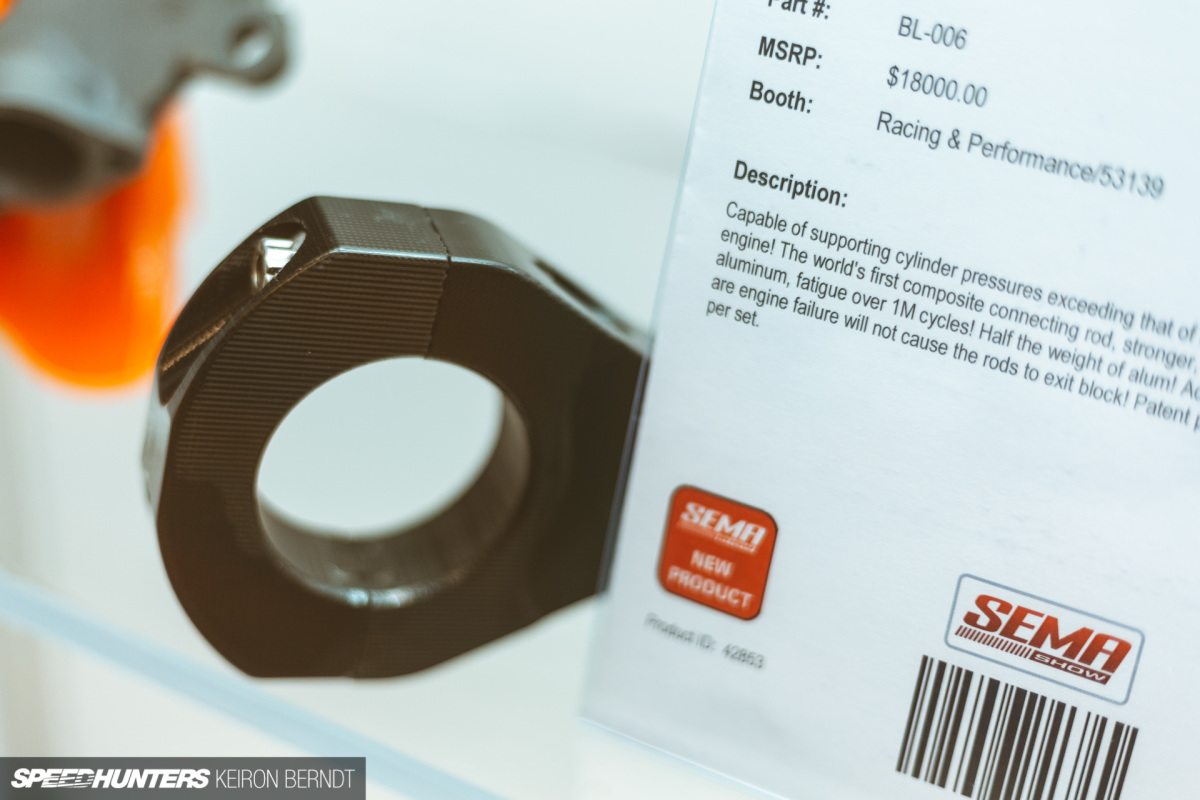
Composite bottom-end components? This is something that has blown my mind ever since first hearing about it a few years ago.
Hopefully, I’m not the only one.
As I was landing in LA for my connecting flight to Haneda, I saw an image pop up in a SEMA press email I received which I thought would make a nice little story to nerd out over. I mailed Keiron and told him to grab some shots of the carbon connecting rods AWA Composites had on display back in Las Vegas.
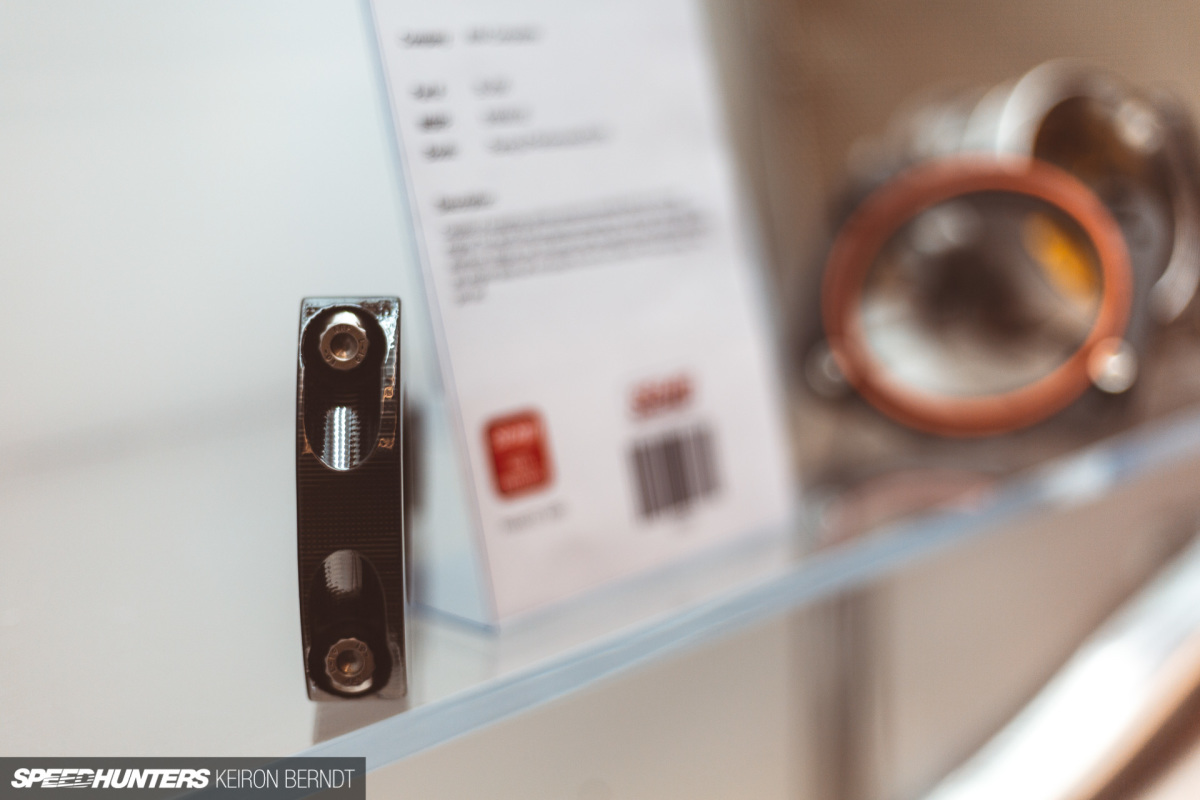
At times, away from FRP overfenders and air suspension, nerding out on the latest technology is something I enjoy doing. It brings balance to the fashion-driven nature of car culture these days. It resets us back to the stuff that matters. Does a set of $18,000 carbon connecting rods for Top Fuel drag racing really matter? Of course not, but when it’s this cool and has the potential to trickle down, how can we ignore it?
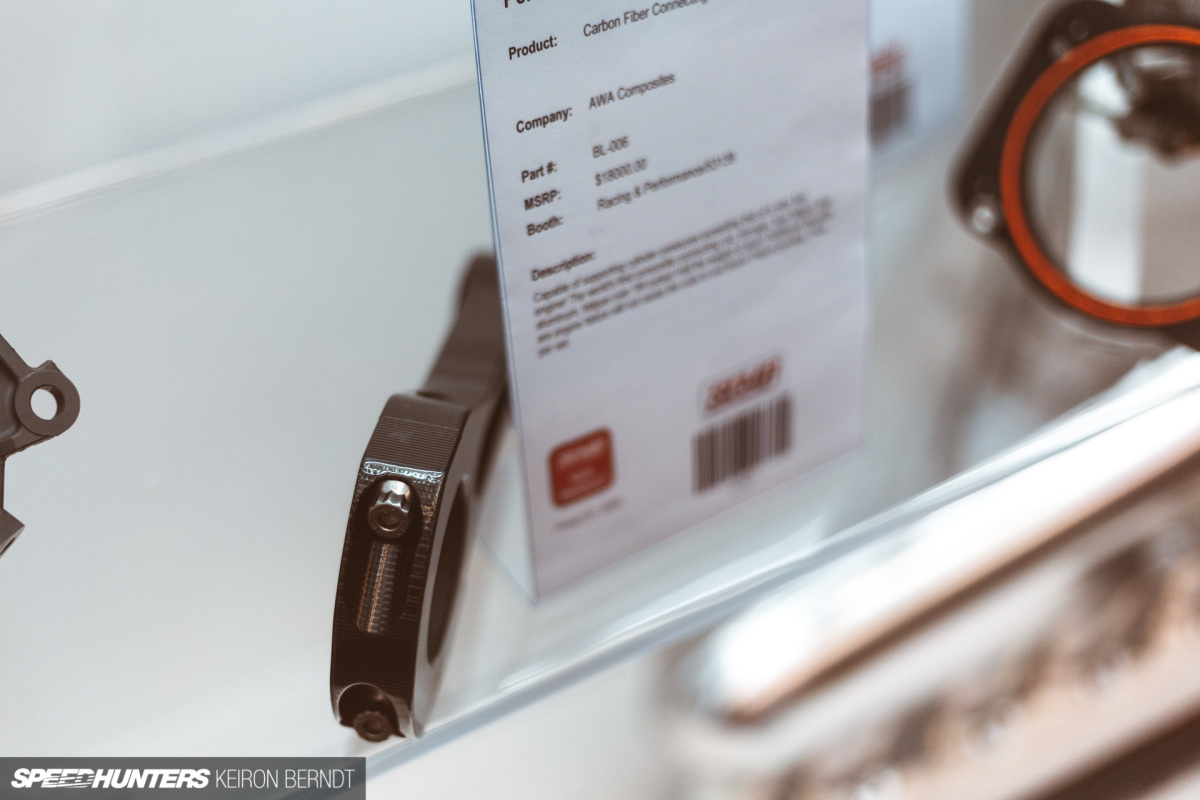
I mean, we aren’t that far away from 2021 when Lamborghini is planning to have their interpretation of composite connecting rods in the next evolution of Sant Agata Bolognese’s V12 engine.
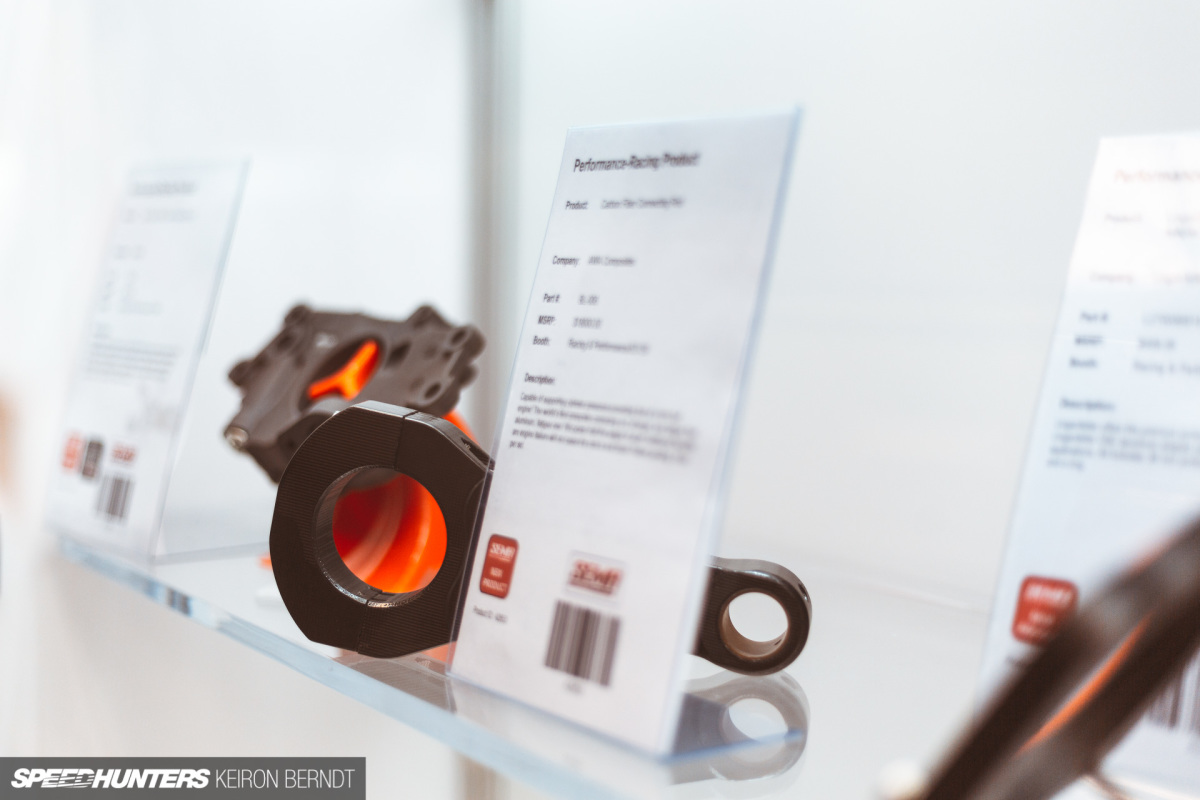
Then again, that’s a little bit different. Lamborghini jumped into the whole ‘Forged Composites’ (a term they copyrighted) thing a decade ago and are now invested heavily. They saw a viable way to evolve car componentry into the future, and they were not wrong. I’m sure in a decade from now a lot suspension, driveline and engine parts will be created carbon production method which they’ve leaned on.
For Lamborghini, forging carbon is a way to work with this material at an industrial level. They basically create pre-impregnated sheets of whatever thickness carbon fiber sections are needed, immerse them in resin, place them into molds and then forge them by applying heat, pressure and time. The resulting forged carbon fiber piece can be then be trimmed and machined without impacting its structure.
When talking about connecting rods, this is the most viable way to mass produce them, as the underlying forged carbon strength has the ability to take the abuse of a naturally aspirated engine without issue. It’s weight with which Lamborghini is really concerned with, as the forged carbon connecting rods can be half the weight of an aluminum connecting rod, allowing their engines to be more responsive due to less inertia.
One look at these AWA Composites rods and you can tell they are all about strength. These things are developed to take serious abuse ,and at the same time being impressively light. Again, approximately half of what a corresponding aluminum rod would weigh. We’ve seen alloy rods used in a lot of cars at WTAC this year, but for how light and strong they are, they have a very short life. Under repeated heat cycles and use they end up deforming and engine builders swap them out after a set time.
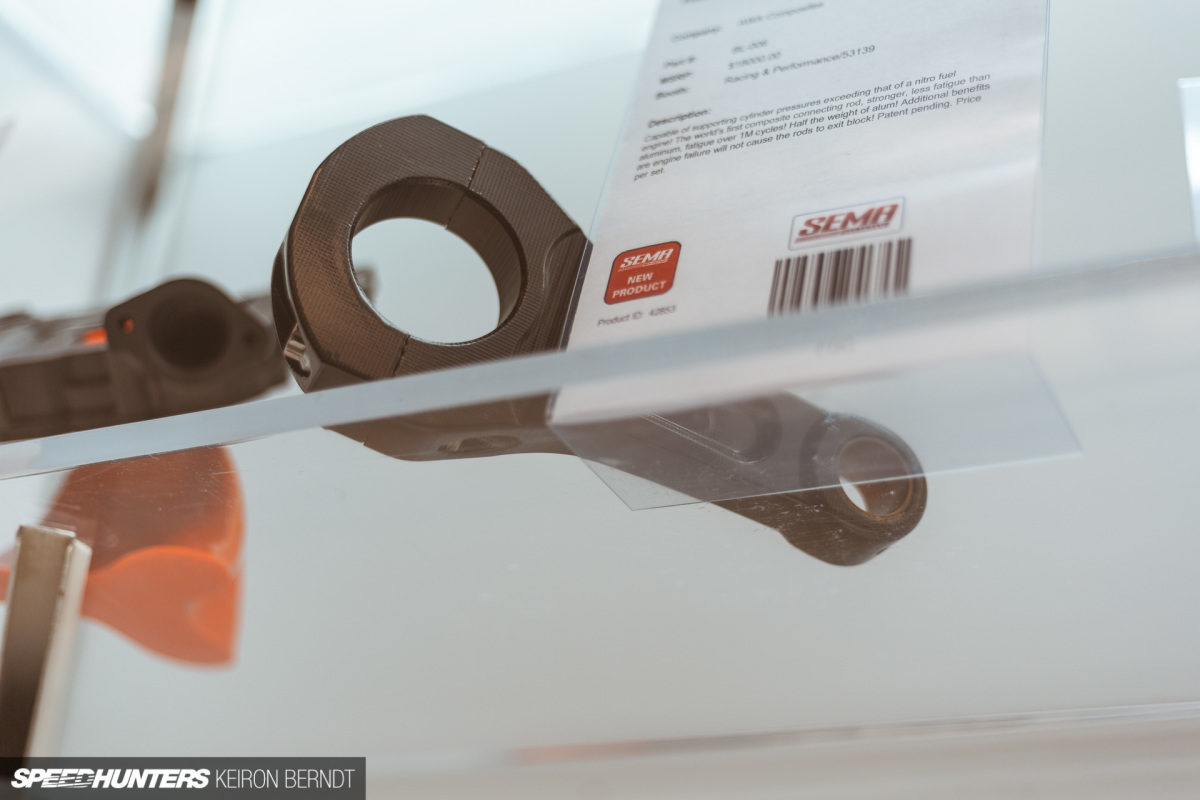
Carbon fiber rods, while expensive for now, will not have these sort of issues and can support even more power. And when they do let go, they won’t take a chunk of the engine block away with them. AWA Composites are even working on carbon fiber pistons which are set to be released next year. Talk about exciting times!
We may be edging ever closer to the dominance of electric power, but it’s so nice to see that companies out there are still pushing the internal combustion engine to new extremes.
Dino Dalle Carbonare
Instagram: speedhunters_dino
dino@speedhunters.com
Photography by Keiron Berndt
Instagram: keiron_berndt
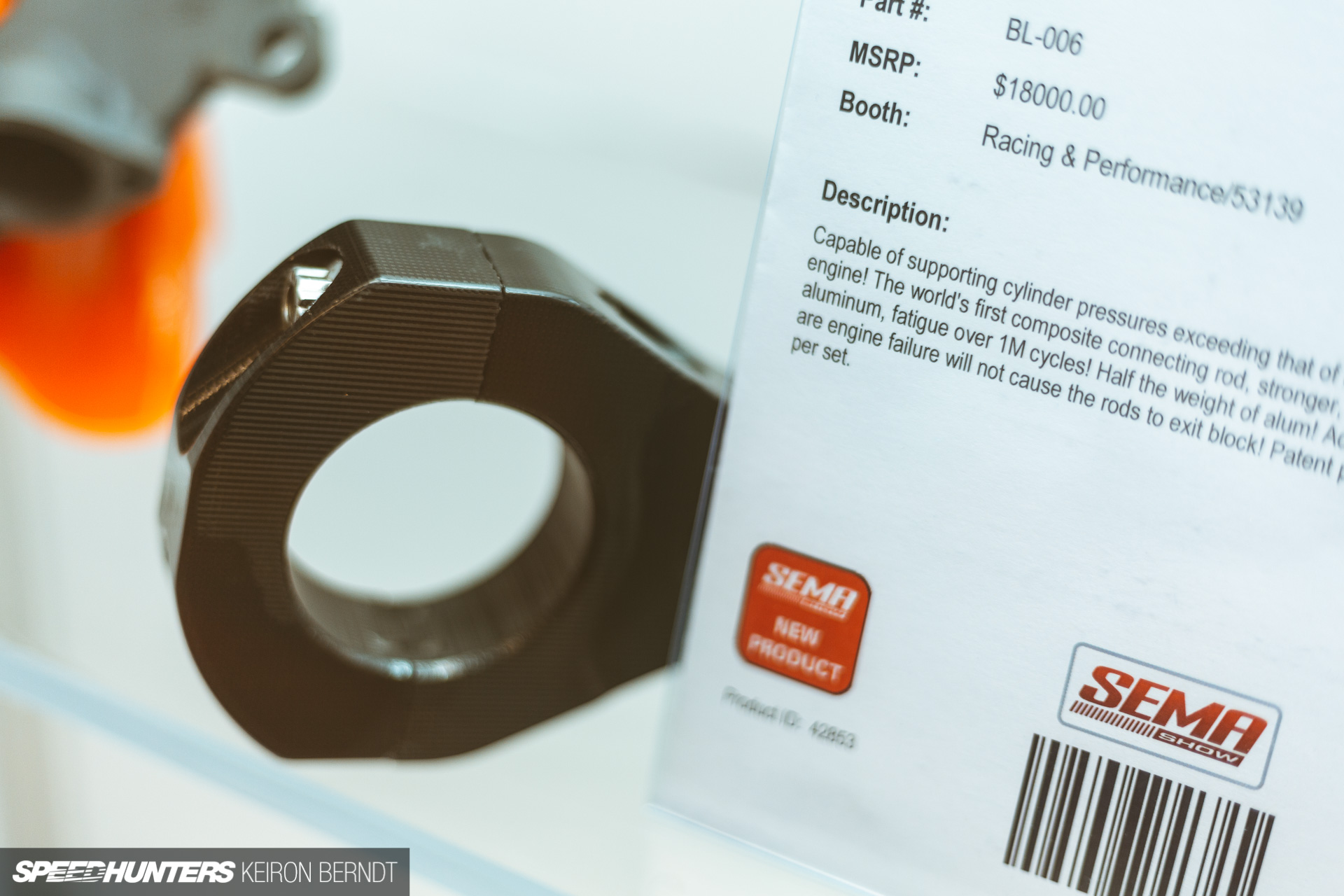
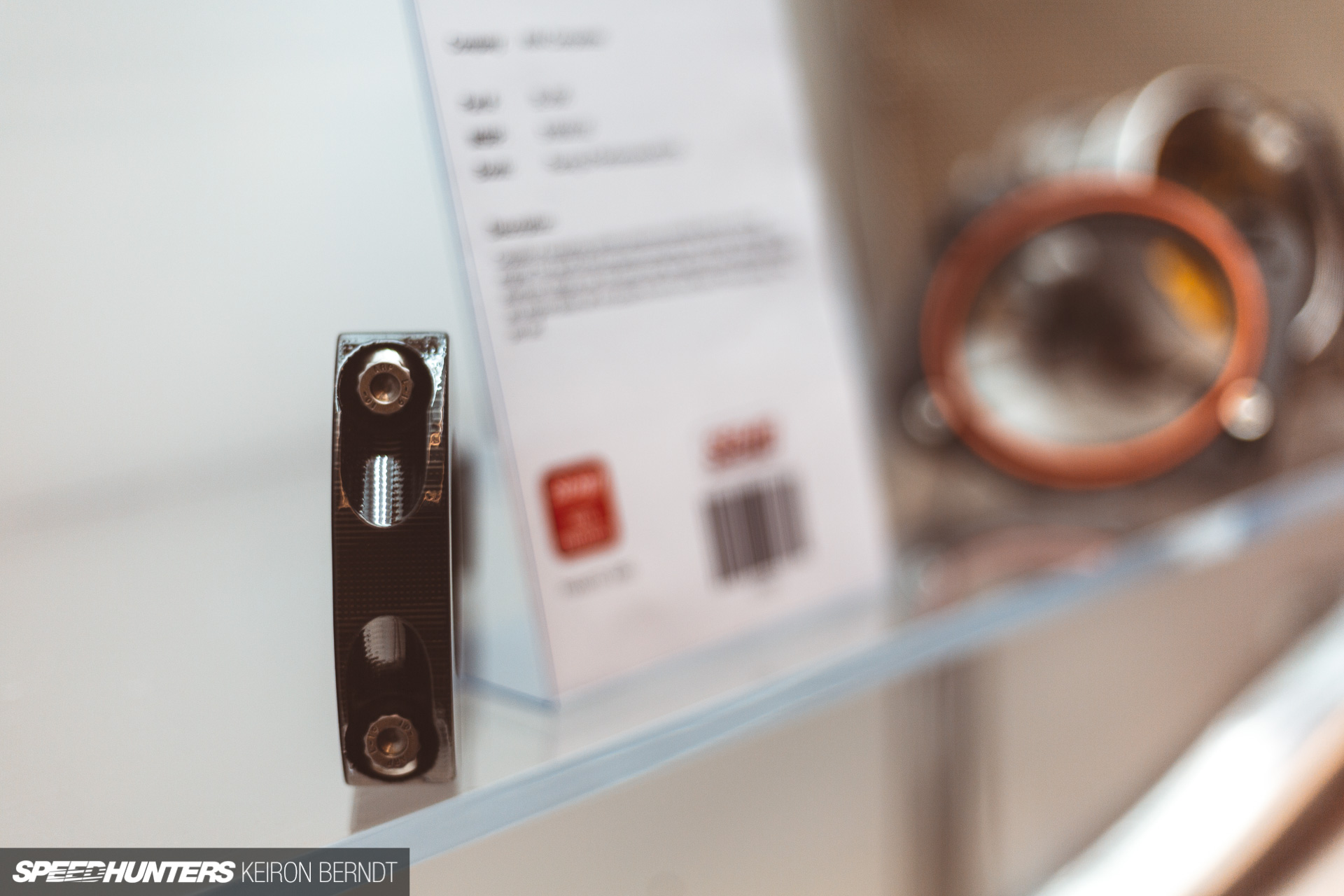
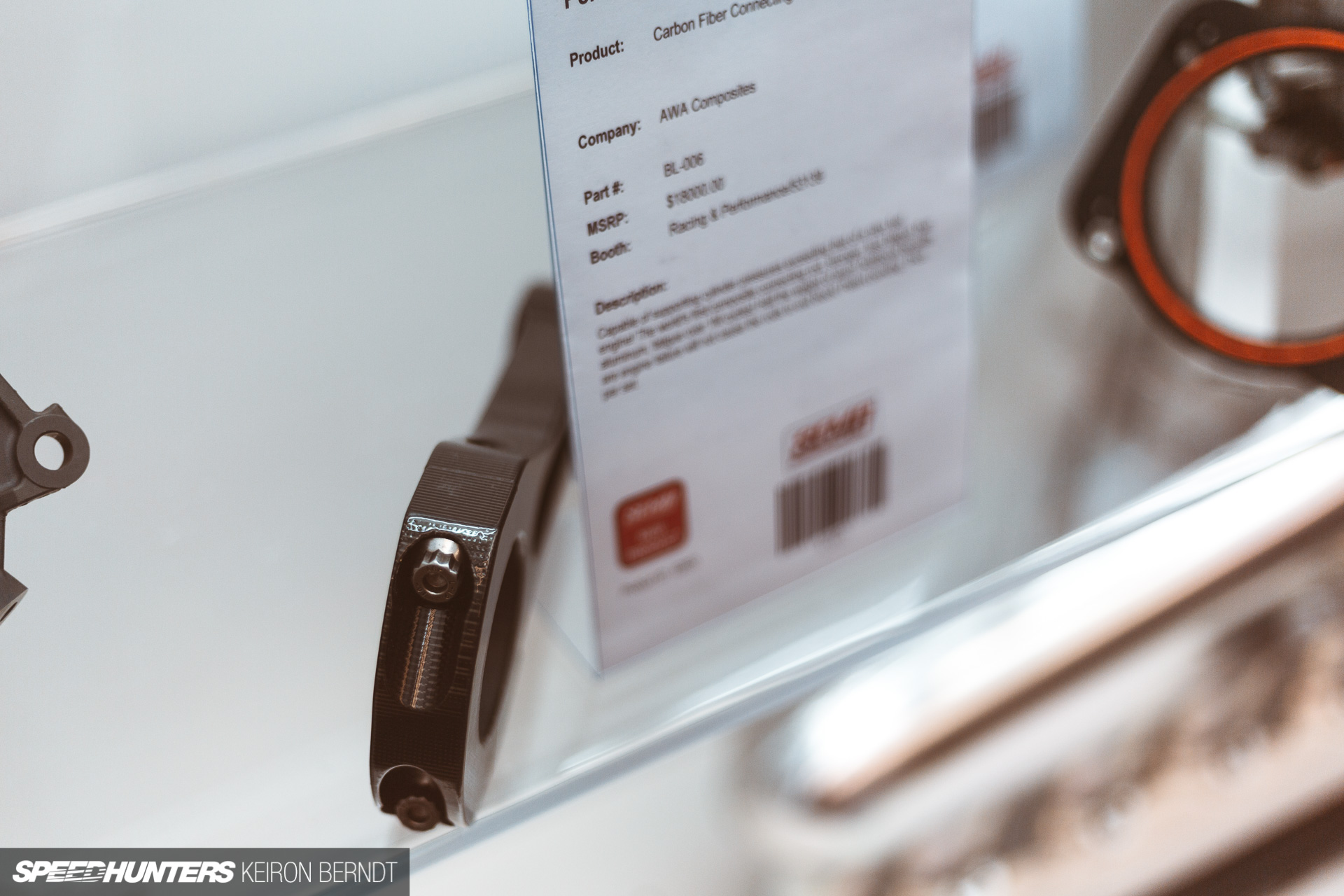
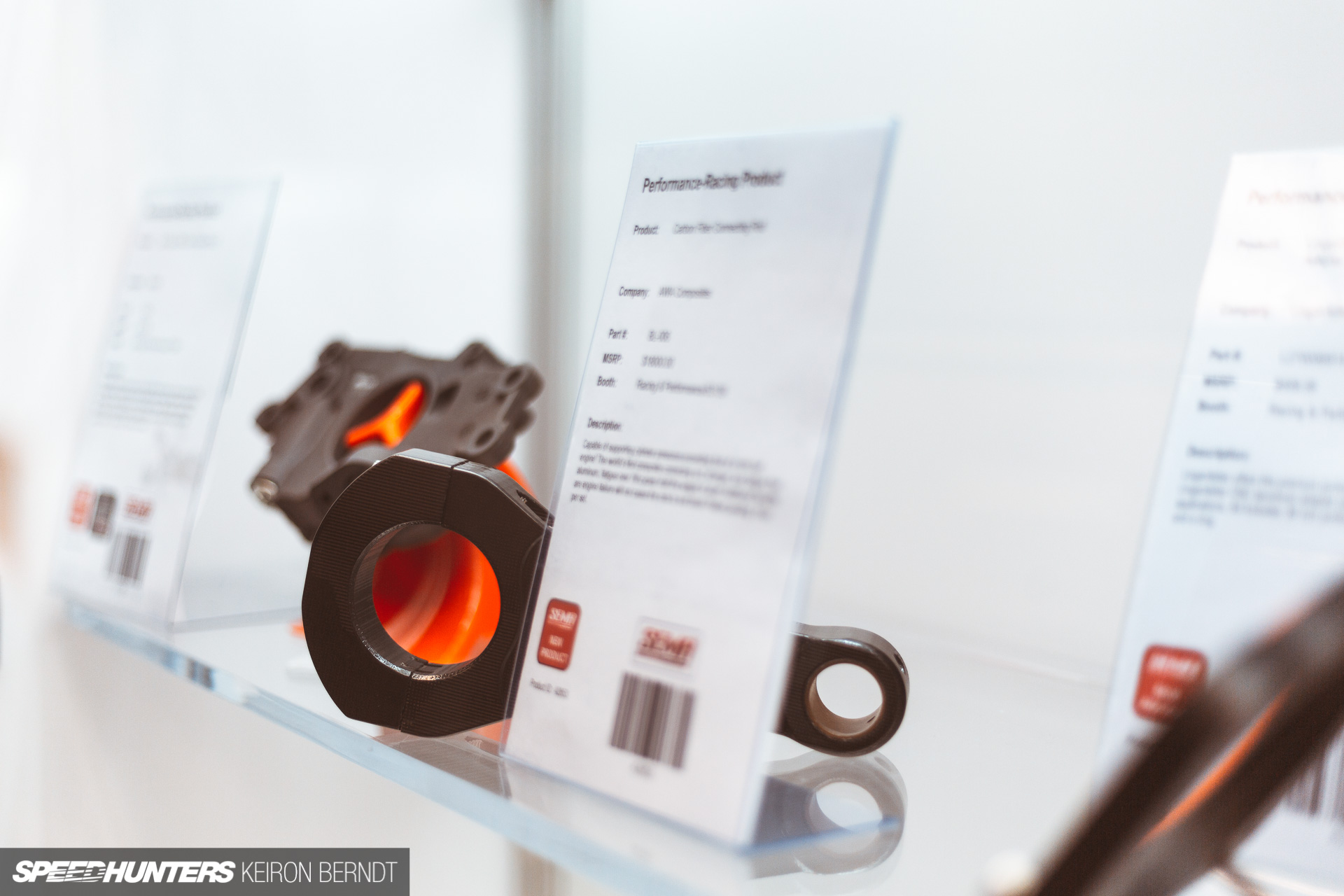
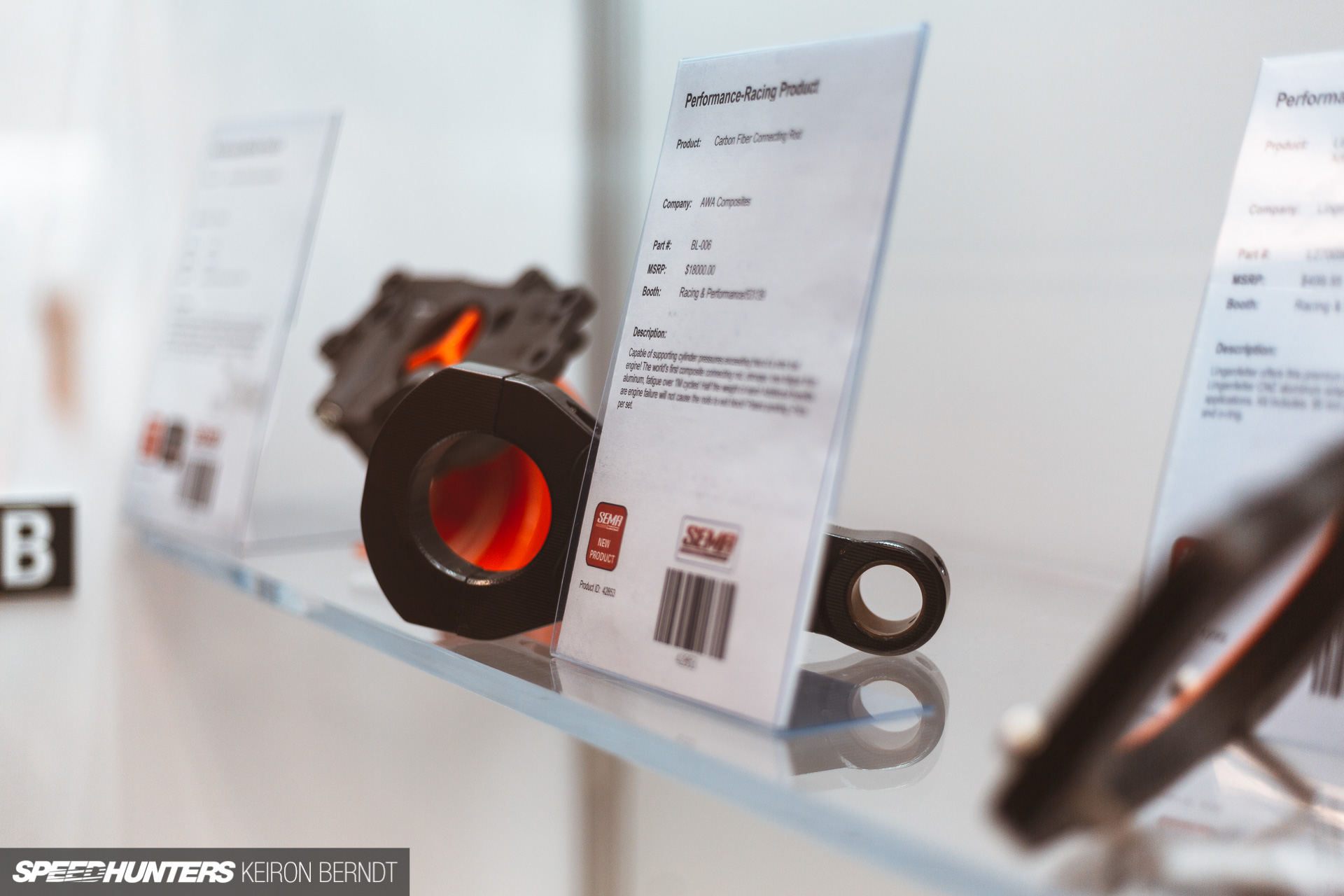
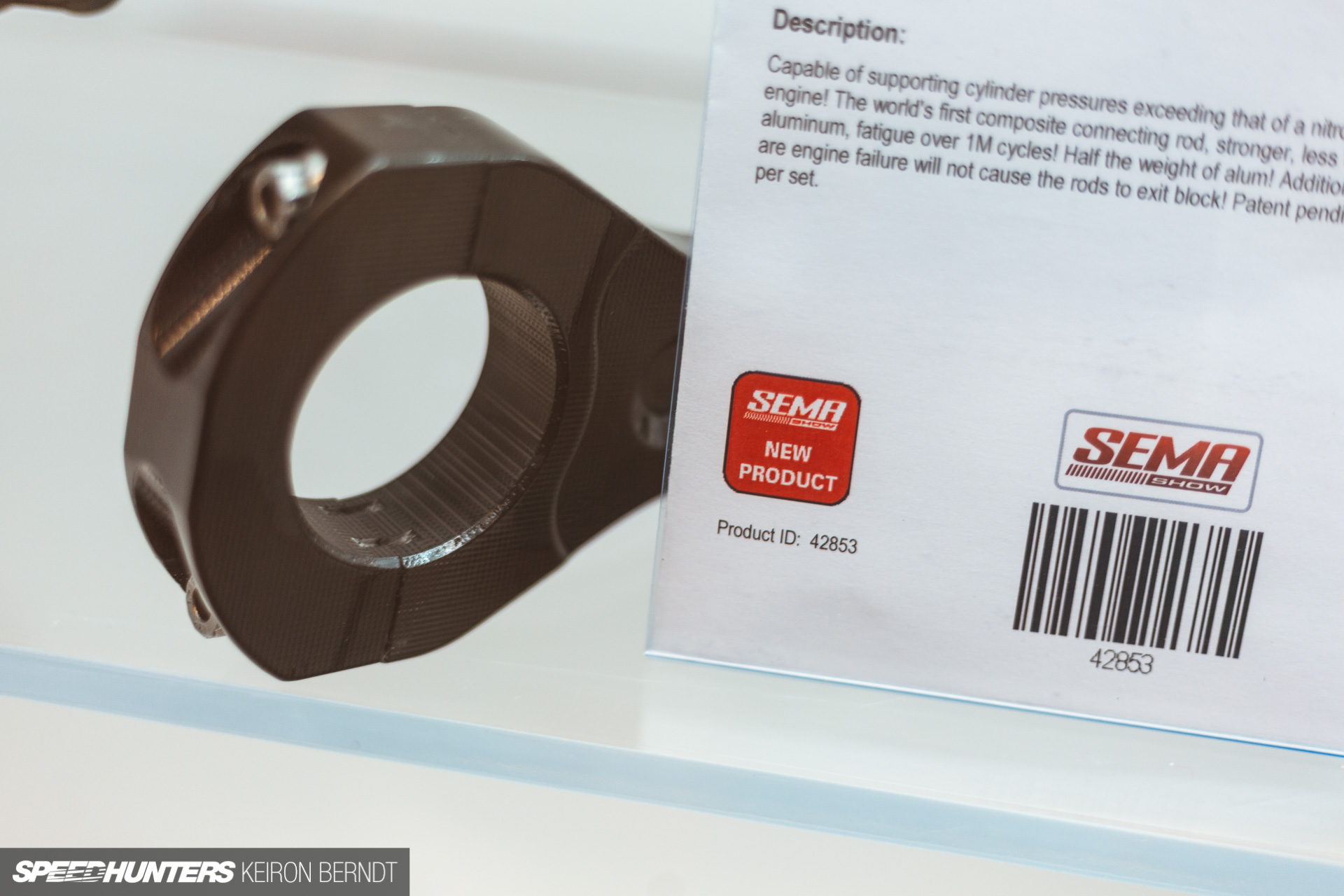
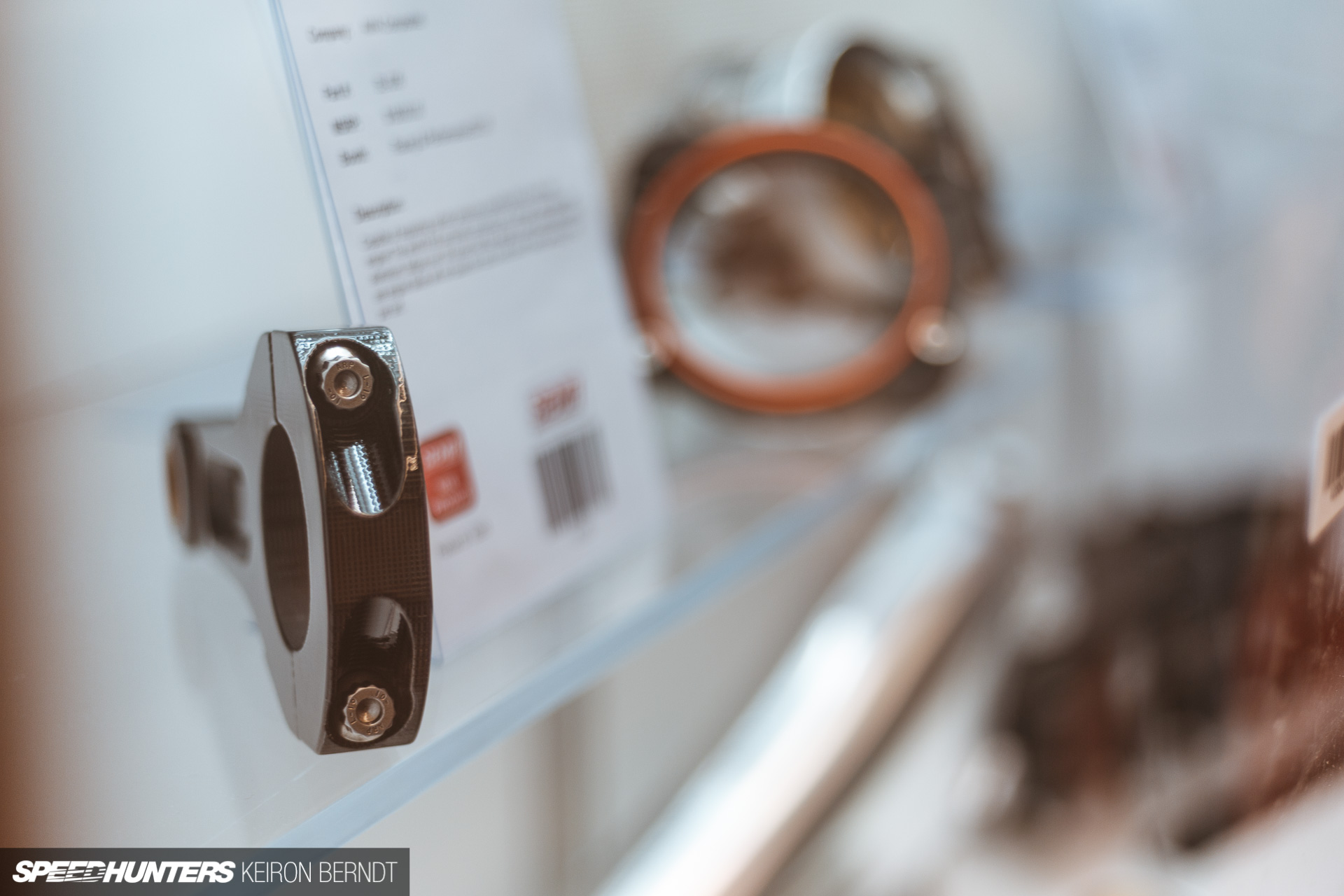
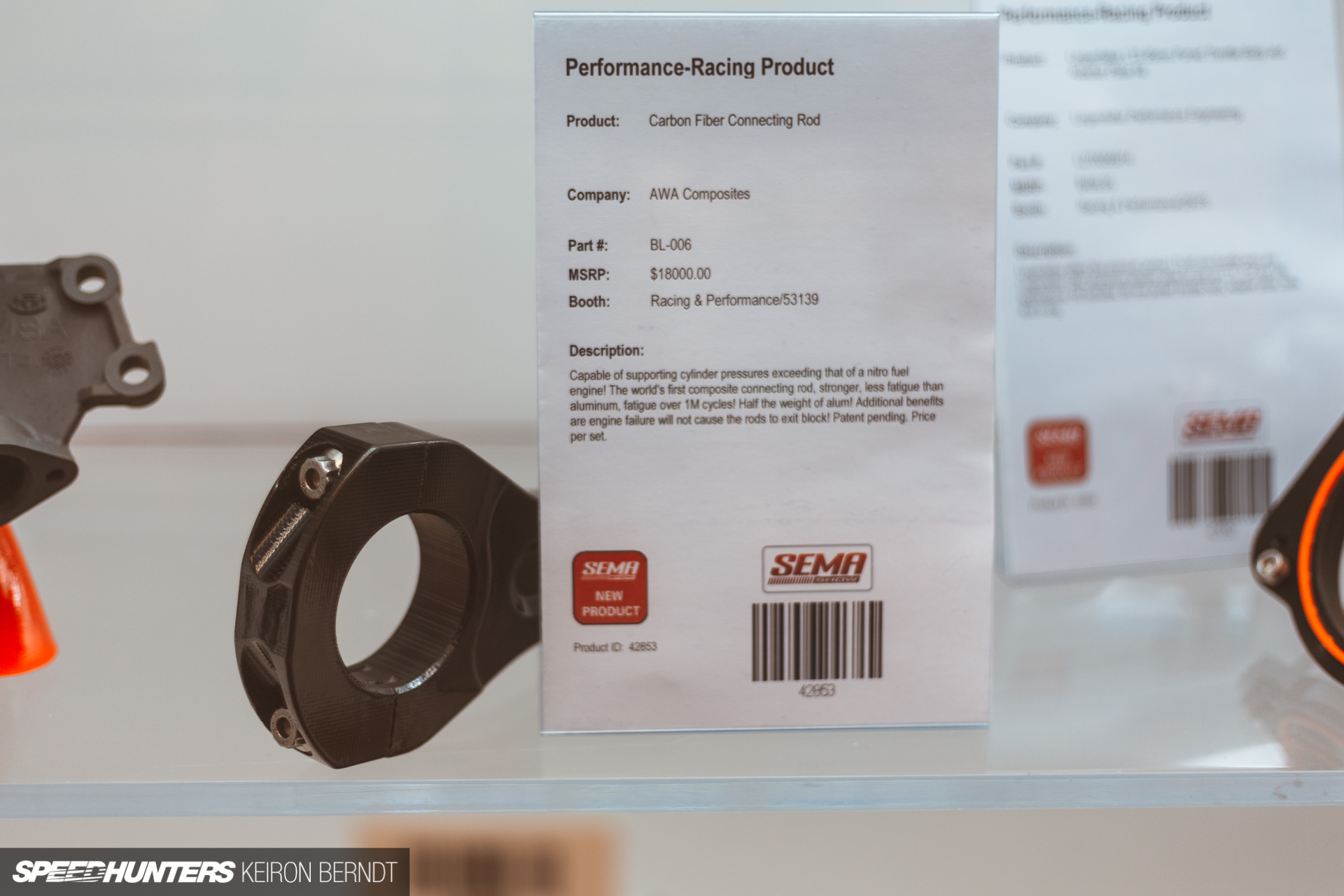
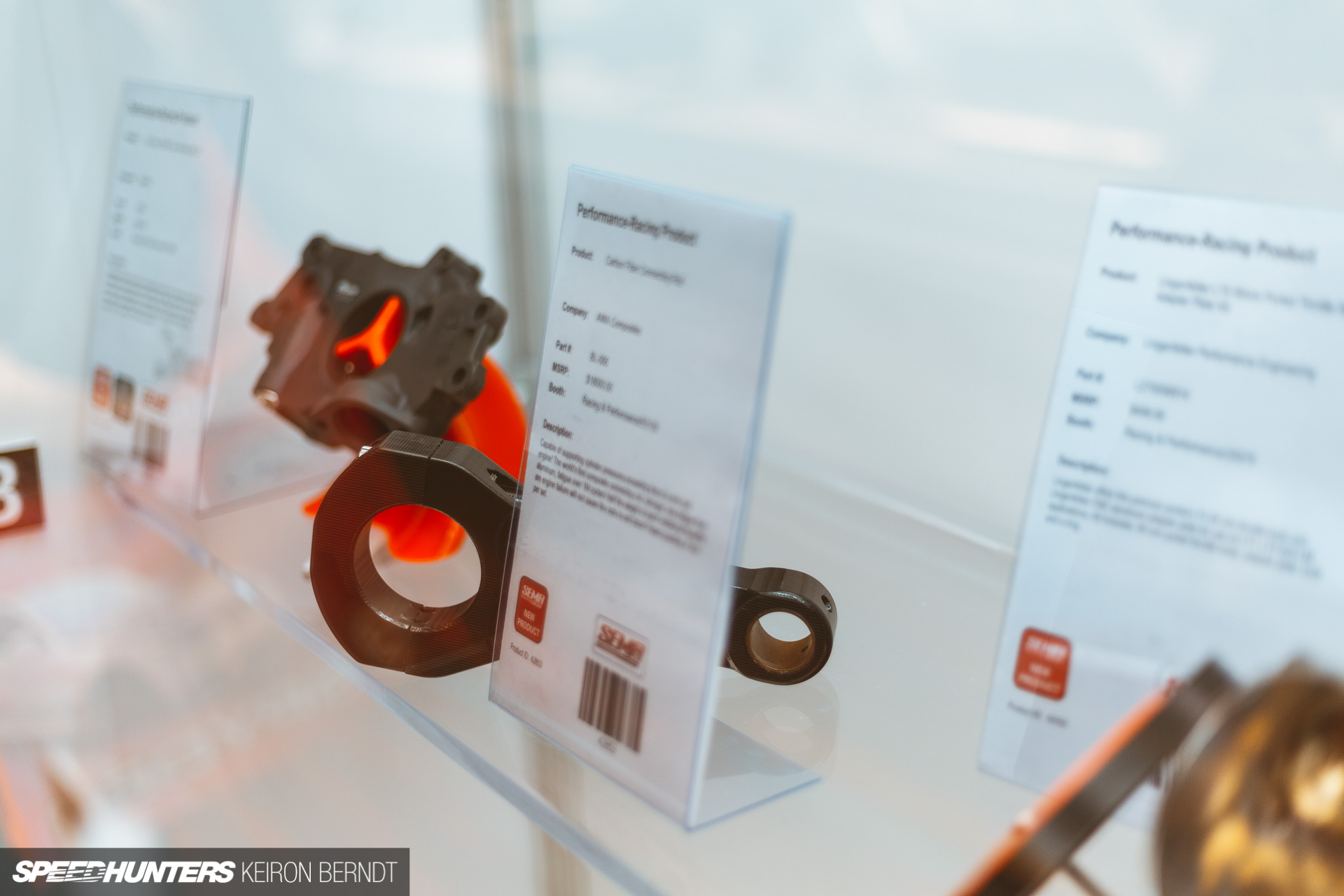
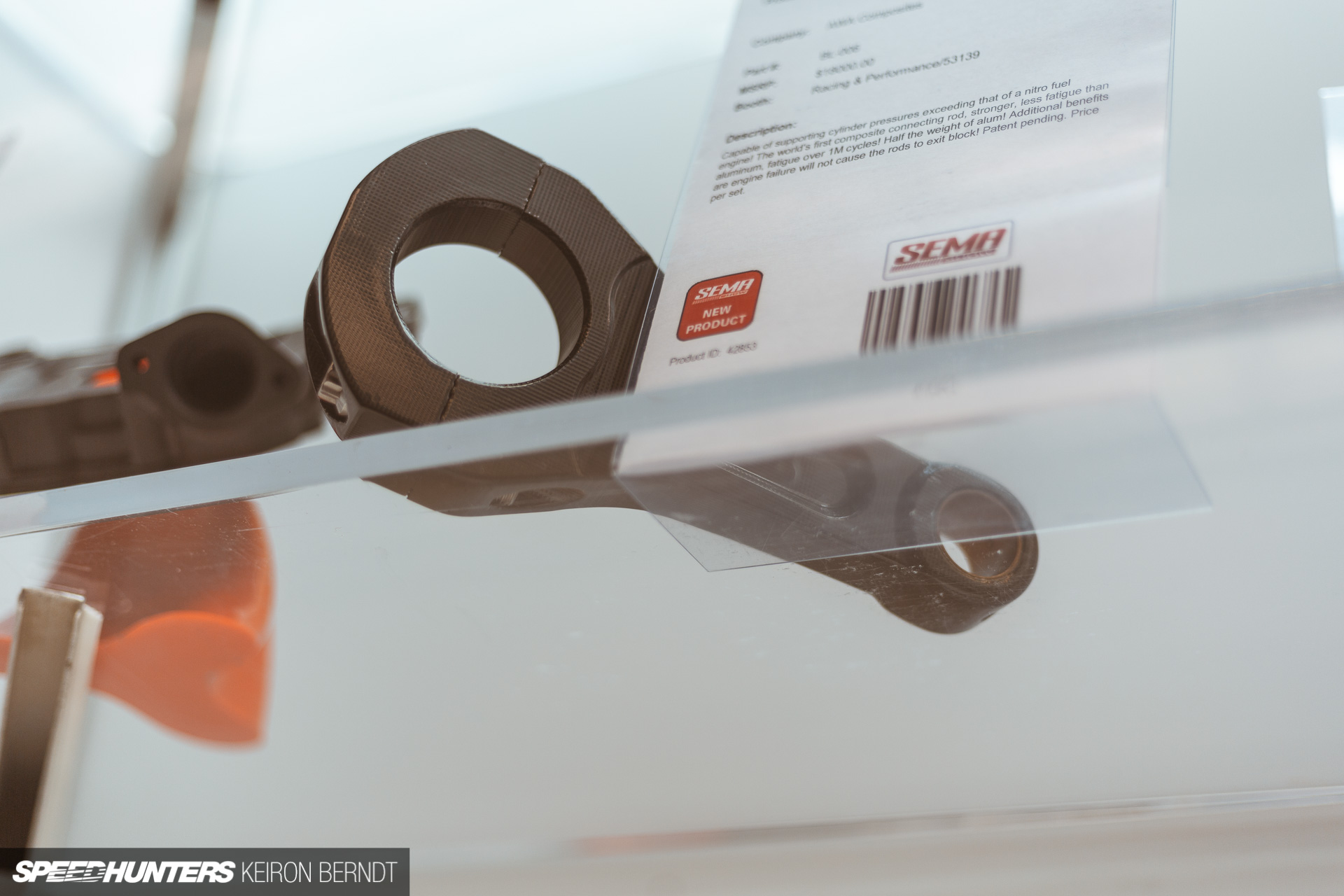



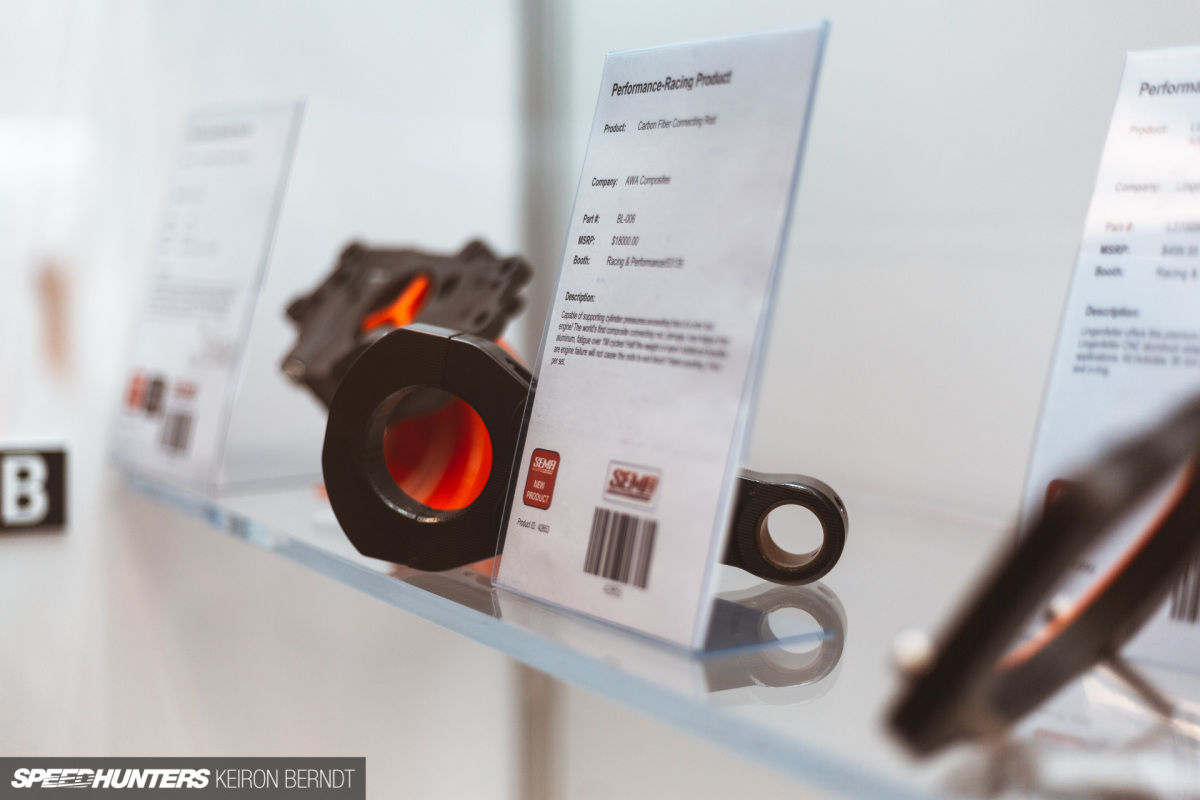

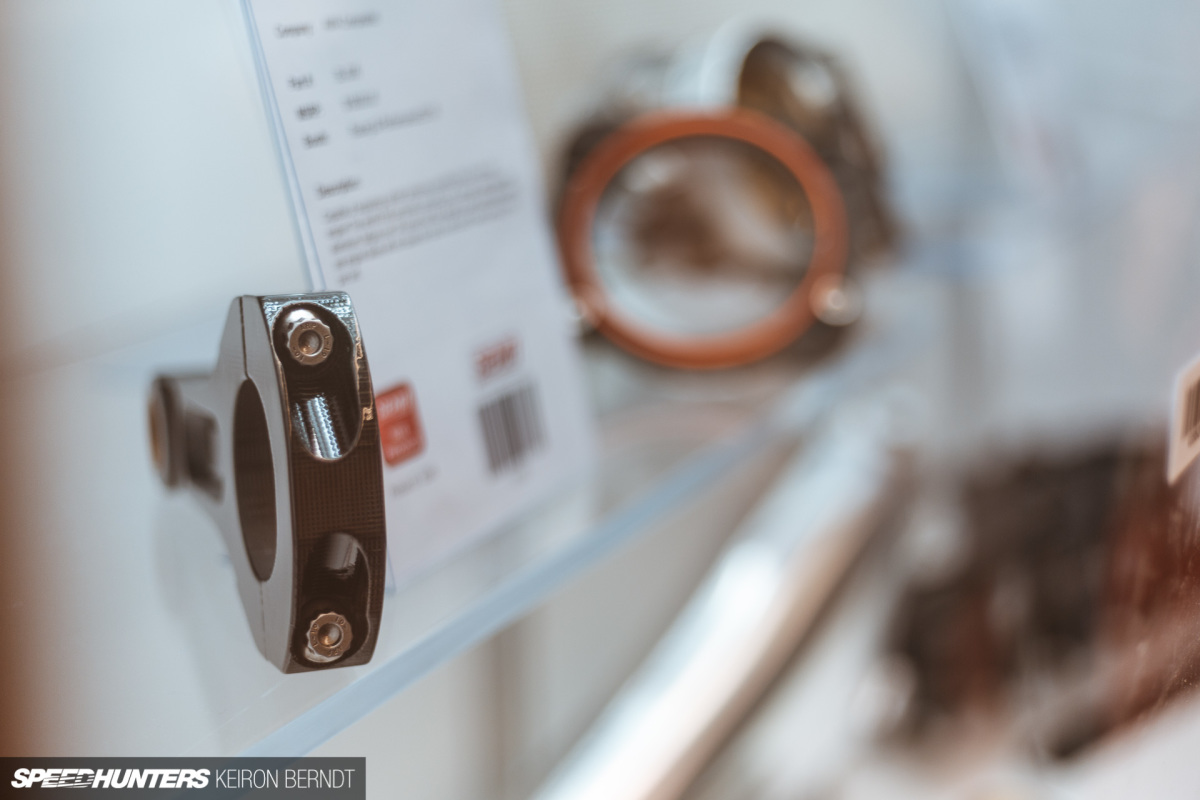

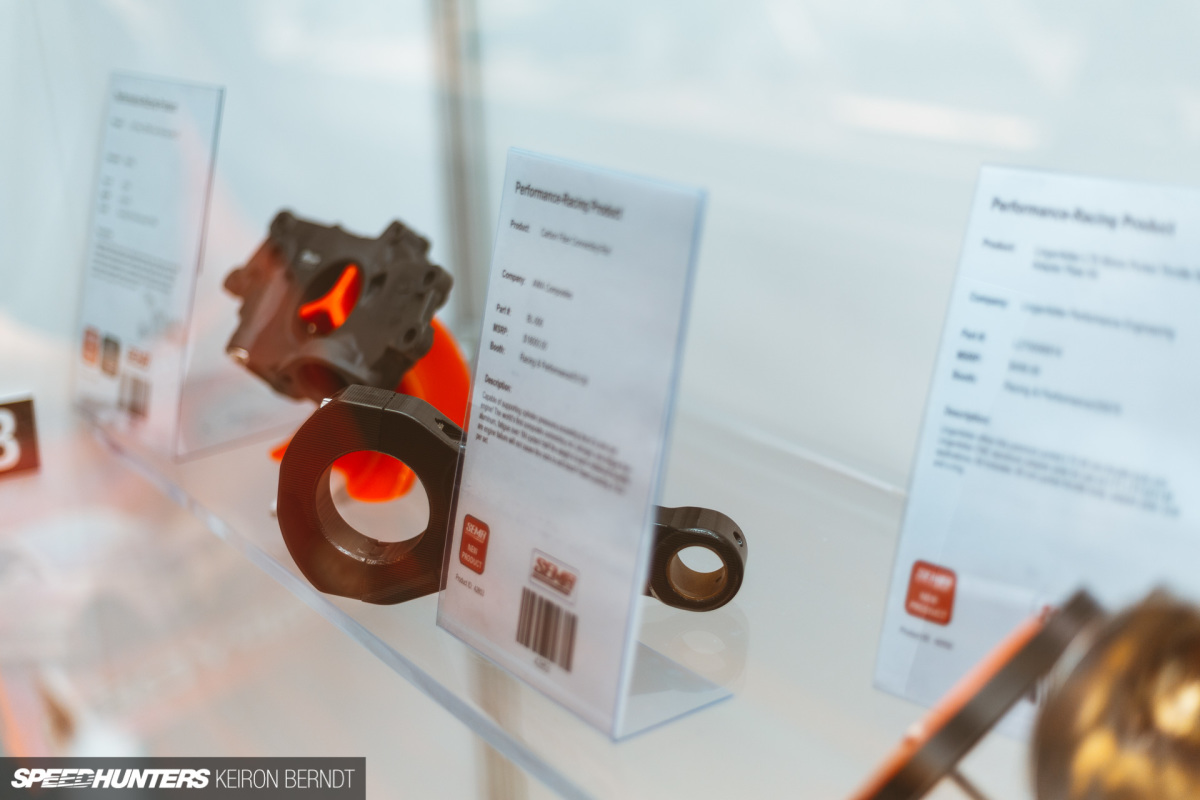





"As I was landing in LA for my connecting flight to Haneda, I seen an image"
Proofreading man.
Then there is this little autistic beauty... Lost a few brain cells reading that one lol.
" I’m sure in a decade from now a lot suspension, driveline and engine parts will be created carbon production method which they’ve leaned on."
I may or may not have forgotten to fix that while chopping and changing the introduction around.
I'll hire a Prius for a week as punishment. Forgive me.
you have to drive my yaris for a week.
I know that wrong grammar in a professional site is a big mistake but no need to apply such a heavy punishment
*incorrect
Agreed, too often there are obvious grammatical errors that should never have happened much less made it past any editor's proofreading effort.
Speedhunters is a professional-quality source of pictures and often specific info on car culture, it would definitely be cool if the writing matched that consistently.
it's obvious you are legs ghon numb, ewe shud shft pohsishun
Carbon fiber conrods, Freevalve and Mazda SPCCI are the next big things for piston engines, IMHO.
Yep the Freevalve thing Koenigsegg has been researching and testing sure is interesting. Bye bye cams! I've also got a story on Nissan's new VTC engine too...which is again pushing things further ...
Freevalve really is a breakthrough once it is available. It would mean a huge step forward, as control of the engine as a whole comes to another level. If that becomes available and would be relatively cheap, I would start converting engines in a heartbeat. Isn't all that hard for almost any engine aside from a flathead. Heat on the exhaust valve is still an issue though. And if that becomes available things like emition scams will become more frequent.
SPCCI and VTC on the other hand: Just a byproduct of advancing precision in ECU: Both more or less marketing gimmicks.
VTC is know since the late 80's, and patents where there well before that (AP Racing I believe?).
SPCCI is slightly further along: Using a spark just before detonation occurs, en letting the detonation do the rest. So in general it's just higher compression with assisted controlled detonation. Thats just to reduce fuel consumption. And even I don't care about that, living in a country where fuel is $7,48 a gallon. Which is about 2,5 times that of the price in the states. And I´m not kidding. Only in Norway ( $7,81 a gallon ) and Hongkong ( $ 8,31 a gallon ) is fuel more expensive.
Ehrrr, Aluminum connecting rod? You mean alloy probably? as in different kinds of metals. Aluminum can be used, but is to soft that application. Normaly it's 1045-1085 (high carbon steel) or something in de likes of 4140 (chromemoly).
Forging is kind of a misnomer though: Yes, there is force applied, yes there is heat applied, but for it to be called forging there has to be a fase change. Using Carbon to make something doesn't have that.
That being said though: It could be a viable source for strong parts. But then again: As an engineer I've worked a lot with carbon, although not in an engine internals kind of way. The problem isn't so much strength, but more in heat tollerance. Carbon has a much lower melting point compaired to metal because of the resin used to harden it. And in case it does fail, it cannot deform as much, but will shatter in stead. Fine In a dragracing application or any application with a short service life, but not so much in an every day car. It'll still be years and years before we see that in engines as a really viable source. No sooner then 2030 to be commonplace. And by that time it'll probably be mostly electric cars, who don't need connecting rods....
forging usually means its pressed not hand forged like bang bang katana folding style that would be one expensive and strong rim though to make it the way katanas are made. super light folded metal.
You can also use thermoplastics for carbon, PEEK is a fine alternative, albeit pricey. Tg is higher than then point of where aluminium is becoming very soft.
Peek or pfte (teflon) are the only viable sources. Pfte is only a surface protector, but van be applied as far as I know. Peek is a different matter though. Working temps for the resin used in carbon are to high. So unless the Peek is used as the resin its not a viable solution.
Are you referring to epoxy when you say resin? Well, some epoxy resins can reach a tg of over 350 deg C.
But PEEK is a more viable option as the mechanical properties are also better, as long as you know what you are doing process wise.
Yes I refer to resin as epoxy and vise versa. Carbon Fibre in itself is needs to use a polymer, and the resin is used for that. Or the Epoxy, whichever you want to call it. The problem is not so much heat itself, but extended periods of heat, cooling, heating up, cooling, etc. If it cant withstand 50.000km at a bare minimum I don't see it as a viable option for a street car. And lets not forget the parts turn around in Oil. Which contains acid. And acid and polymers don't mix that well. Acetone being one, which is also found in Fuel these days. So using a forged piston is out of the question for longevity, because of sealing issues during startup and contaminating oil.
Peek is currently used mostly in seals and such in automotive and aerospace. It can be used in relatively high temps (250 degrees celsius), but it does expand quite a bit in those temps. Expanding conrods are a very bad idea in a street application.
It could be used for short runs though, so dragracing might be a viable option. But this isn't something for circuit racing/endurance racing, let alone for the street....
What about carbon-carbon? Obviously if it can be used on the space shuttle, it can be used as a con-rod.
Carbon carbon isnt only used on the space shuttle (nosecone and leading edges of the fins?) but also on the brakes of F1 cars. I worked with the stuff. Very high temp tollerance but nu impact resistance whatsoever. So thats why i didn't mention it, as its unsuitable for the application. Silicon carbide would work though, but is a lot heavier and is therefore not used for brakes or parts like the nosecone.
It might work, but I don't know how brittle a carbon-carbon ceramic is. And generally, brittle things is something I do not want inside my engine
Beside the insane cost and development time. It certainly looks like the best material we have for an application like con-rods, or pistons.
Properties of Carbon-Carbon Composites
Excellent thermal shock resistance;
Low Coefficient of Thermal Expansion;
High Modulus of Elasticity (up to 29000 ksi / 200 GPa);
High Thermal Conductivity (about 700 BTU*in/(hr*ft²*ºF) / 101 W/m*K;
Low density (about 114 lb/ft³ / 1.83*10³kg/m³);
High strength;
Low coefficient of friction (in the fiber direction);
Excellent heat resistance in non-oxidizing atmosphere. C/C Composites retain their mechanical properties up to 5432ºF (3000ºC).
High abrasion resistance;
High electrical conductivity;
Non-brittle failure.
As I said earlier: It isn't suitable for that application: It has no impact resistance. I've worked with the stuff for years. Heat isn't the issue, as it survives re-entry in our atmosphere, and is used for years as brake material in F1. It will just shatter If you use it as a conrod. Try heating up 2 hammer heads to quench temp, and cool them rapidly in water. Then strike them both against each other. That'll also happen with Carbon Carbon conrods.
Silicon carbide will probably work though. Thats the material used on ceramic brakes and ceramic clutches on almost every other car and racecar on the planet. And it can withstand oil, as it is also found in engine oil. It's also used in sanding paper and discs for higher end applications.
Carbon Carbon is only used for brakes and clutches in F1 because of it's weight. Silicon carbide reinforced carbon is a bit heavier. It is lighter then hardened metal though, but probably slightly heavier then aluminium.
All in all Carbon carbon is dead end as far as conrods go.
Well CC pistons seem to work just fine:
Langley Research Center, Hampton, Virginia
"Internal-combustion engines would be constructed with cylinders and ringless pistons made of lightweight carbon/carbon composite materials, according to a proposal. This proposal is a logical extension of previous research that showed that engines that contain carbon/carbon pistons with conventional metal piston rings running in conventional metal cylinders perform better than do engines with conventional aluminum-alloy pistons. The observed performance improvement (measured as increased piston life during high-performance operation) can be attributed mainly to the low thermal expansion of the carbon-carbon composite. Carbon-carbon pistons can continue to operate under thermal loads that cause aluminum pistons to seize or sustain scuffing damage due to excessive thermal growth and thermal distortion.
In addition to having an extremely low coefficient of thermal expansion, carbon-carbon is about 30 percent lighter than aluminum which provides the benefit of reduced reciprocating mass (lower reciprocating mass can potentially reduce vibration forces and increase r/min. capability). Carbon-carbon composite also has the advantage over aluminum that it fully retains room-temperature strength and stiffness at high temperatures. Further more, the strength, thermal expansion, and thermal conductivity of carbon-carbon composites can be tailored by orientation of the carbon fibers and selection of fiber type, matrix type, and processing methods."
"According to NASA: CC pistons can potentially enable high performance engines to be more efficient, be more reliable, and have a greater power output. An engine equiped with CC pistons can operate using leaner AF mixxtures because these pistons can function in higher combustion temperature environments without failure. In addition, because CC material retains its strength and stiffness at high temperatures, CC pistions have greater resistance to structural damage caused by overheating, lean AF mistures and high cylinder pressures that result from detonation. "
https://ntrs.nasa.gov/archive/nasa/casi.ntrs.nasa.gov/19940031440.pdf
There are aluminum connecting rods. Usually reserved for race engines only, as they elongate and need to be swapped out relatively frequently.
Did a search and your right. Not used on anything but drag racing with about 3 passes maximum. Why You would want to have it is beyond me though? I've seen Pauter makes them....
They were being used in WTAC cars (which are pretty much drag engines), forget how long they can use them though
Like any engineering decision, its all about cost vs reward. If those aluminum rods give enough of a time advantage to be a reliable winner and the winnings/extra sponsorship dollars are more than the cost of the rods, it makes for an easy decision. Its all about finding the right combination of price, longevity, and overall benefit to the time slip, because some drag engines are torn down after every run it is not a big deal to swap out the rods after 3 passes.
Nah they just had spare engines ready to go. Some teams were able to swap engines in under 2h, they have it down to an art. Then the used engine gets stripped down, conrods replaced and ready to go. Every little advantage counts
"Colin's idea of a Grand Prix car was it should win the race and, as it crossed the finishing line, it should collapse in a heap of bits. If it didn't do that, it was built too strongly" Innes Ireland speaking about lotus race cars.
what a cool time we live in...
imagine all the people that have yet to be born that will have this in there economy cars
Right? Can't wait to see all this tech come together and push the ICE before EVs kill it off
One thing I wonder about is why this hasn't been done before. Carbon has been around for a long time now. You would think someone at the high up levels would have done this. Probably won't be allowed in any series to keep costs down. Maybe that's it.
Interesting idea though. Wonder if the price would outweigh the gains from traditional light weight materials.
carbon fiber has gone from an expensive 90s material to affordable. its now just geting to the point of where you can store carbon fiber cloth in your meat box in the cellar.
most decisions in racing come down to a cost/benifit analysis. In those costs are not only the price of the parts but their expected lifetimes as well as cost of replacement. Most motorsports components are rated in hours of performance such that after x number of hours the parts must be inspected or replaced. Depending on what kind of racing you do will dictate your expected lifetime requirements. In nitro drag cars where the motors are torn down after every pass it makes sense to have parts with short lifespans as opposed to other types of racing where engines must last several races (F1) or several hours of constant abuse (endurance racing).
Take for example the stated lifespan of 1 million cycles. If we take that to mean that the rods will last for 1 million rotations then we take an average RPM of 5000RPM, we have a con rod that will last for 200 minutes or 3 hours and 20 minutes. That is an extremely short life-cycle for any circuit racing as it wouldn't last a full weekend with qualifying, practice and race. Could they make one capable of lasting a longer time? they probably could but what other trade-offs are going to have to happen? larger bearings? larger profile? different packaging? and how do those changes affect the rest of the packing of the motor? Its not as simple as some people would have you believe, there are alot of variables to consider in these decisions. Someone has probably tried it but had trouble making it a feasible thing, I am not suprised to see this being implemented in a short life-cycle application first nor am i surprised to not see it until now. ICE drivelines are some of the harshest environments for materials with vibrations, temperature fluctuations, extreme forces and multiple styles of bearings. Carbon fiber parts may be strong but they do have some drawbacks (like the differential in thermal expansion with other metal parts), some of those drawbacks can be engineered around but they cause a ripple effect that affects the rest of the car as other parts must be designed to compensate for that one decision.
Well said, I know a former F1 designer. Lots more to building a good F1 car than meets the eye. You're very right on that.
As it stands now: Not really. In motorsport applications its all about the strength to weight ratio: Equal weight is higher strength. Equal strength is lower weight. Lower weight will result in less fuel needed to make one rotation. And maybe a couple of HP in the low to mid range of the RPM band. Higher strength would in theory mean more boost or higher compression. Both of them will lead to more power, or will lead to leaner burning cycles, which will result in less fuel consumption. My most likely guess is that it will mean the latter for road going cars. Money isn't made in the fasted cars these days, but in the run of the mill bread and butter cars....
Eh, yes and no. It's been a long time, if it had commercial viability someone would have one it now like Penske who has 1.5B to play around with.
The rod may not come out of the block but if the piston head drops into the rotating assembly it will....
Yes you have a point. How about if the piston itself is carbon too lol
Forged composites is a misnomer. I have a problem with this designation. Forging implies that metal is heated and then impacted to create a shape in which the impacted outlying material is strengthened, which provides an advantage over a cast part, but typically is more expensive way to manufacture. However, forging allows you to make components smaller and lighter, because of the strength advantage. So, there's a tradeoff.
This is simply put, a new molding process for CFRP. Unlike metal forging, "forged" carbon is not as strong as a traditional layup structure, but allows parts to be made significantly faster, which significantly cuts cost out of carbon fiber production.
This is essentially a slow injection molding process for carbon fiber parts.
"Step one: load chopped, randomly oriented carbon fibers impregnated with resin into a two-piece steel mold. Step two: apply heat and 1200 to 1500 psi of pressure. After only three minutes, the CFC part is cured and ready for removal from the mold and trimming"
You can do a similar process to strengthen injection molded plastic components by adding fiberglass or carbon fiber to reinforce the parts which has been on 4 wheelers for almost 15 years. Cars, maybe 30? I don't know. Obviously not as strong as the high pressure molding they're doing on con rods.
Glass reinforced Nylon (polyamide) and phenolic composites (like those made from types of Bakelite) have been around for far longer than 30 years.
"Forged composites" have been known in the industry for a long time under the name SMC - sheet molded compound. Nothing new, just a different name and suddenly you are innovating....
Usually BMC (bulk...) if you're not doing flat stuff and panels, etc. They're really the same thing, except BMC is the precursor to process into SMC sheets. There can be differences in fiber length depending on the application and type of molding that is used for the final product.
Keep in mind that with something like a con rod, an oriented strand preform would be used, instead of just putting some random fiber stuff in a mold.
Exciting new life to future ICE imo: imagine a full composite small block (alloys and misc used wherever better like the crank, liners, etc), electronically-decided revving between 7k to 15k depending on heat/sensor data, 4-cyl’s performing 300hp+ N/A on what today would be considered lean/eco, add in HCCI or Freevalve for more expensive engines, and overall system weight under 400lbs paired with ultra high thermal efficiencies?
Suddenly EV’s will have a serious performance alternative come 2050 or whenever we’re able to get our batteries up to par w our other, older tech. Sure those future EV’s wil decimate all on the record lists - but the sound and fury of one of these composite ICE in the right chassis will offer the more popular experience mos def. cheers AWA!
Wow.....a new level of Torque...........internal combustion is alive ........a new Ring Record ?
I'm very curious if they wrapped those con rods in that plain weave carbon to make it more recognizable as a carbon part or to prevent surface damage, etc. I have to infer that there is a lot of not-so-pretty unidirectional carbon underneath. I can't imagine that a plain weave fabric would be used for anything structural in that application, for the traditional reason of wasted fibers that don't carry load because of their direction, and because of the other traditional reason of poor load path from fiber crimping.
Always blows my mind how much knowledge our readers have! Keep it up guys, these comments are sooo good!
It's always good to hear about realities and the small details of why things work or do not work from those who actually do the work or engineer the products, as they usually have a far different story to tell than a manufacturer who generally does not want ANY negative details to emerge about their product or process, even if that makes the work moot.
This way we get to know that although these things do exist, they are often not something we will ever use or personally experience like a Ferrari F40, and therefore will have about the same impact on overall life that a F40 has in that most of us have a LONG way to go before we hit Ferrari territory.
You're right, that's kind of strange because the weave is largely for cosmetics. A truly 'forged' part wouldn't look like that. 'Forged' composite is largely a misnomer, because it really isn't forged at all, at least, not in the way we think of forged metallic alloys.
https://www.lamborghini.com/en-en/brand/innovation-excellence/forged-composites
nice to see need for speed underground 2 technology become a reality and bose maglev suspension was a wild idea back then. great to finally see something carbon fiber that isnt asthetic, up next carbon fiber fuel injectors.
I find it funny that Lamborghini is going to pioneer this technology in the somewhat mass market when they dismissed the entire potential of carbon fiber, and thus being at the forefront of the tech decades ago with Horacio Pagani.
It was all down to the management. It had a tough period back then, parent companies not wanting to invest. Now the VW group obviously know where to allocate money
This is... confirmed? *starry eyed look*
I'll define composite: made up of 2 base different materials. So that doesn't have to mean it's carbon. Any metal other then pire iron is a composite these days. The connection rods in any car are composite for that matter in the most litteral sense....
looks cool but, the downside is carbon composite is hard to recycle. i'd prefer inconel instead
There is no need to use inconel in such a low temperature application like a conrod; there are many other metal alloys (with far superior physical properties than inconel) that would be a better choice (like titanium).
"Over 1M cycles" is great for a drag race or time attack car, but for reference; that is only 16.7 hours of run time on an engine at 2000rpm. You couldn't even putt around an endurance race on one of these rods. A ductile material is going to be more suited to fatigue loading until our composites technology makes a big leap.
Every day in the world of the internet new things happen. Of course, children's sense of entertainment changes accordingly. For example, friv.party offers you the best and fastest way to find these games. From these different and interesting game genres to top quality work, you can get to the games that everyone wants, on those pages where you have many options. It is now easier to spend time for girls or boys coming home after school, especially at friv.com. Because this platform collects the most preferred children's games in the internet world.
The characters are interesting and different, the most beautiful adventures and stories take place on these pages. Especially, there are many game types that are among the important and remarkable friv games to be played on the internet. In addition, the design of the site is designed to be simple enough not to distract children. There are not any ads and similar pages that distract people who are constantly disturbing people. Game site is very suitable for playing games.